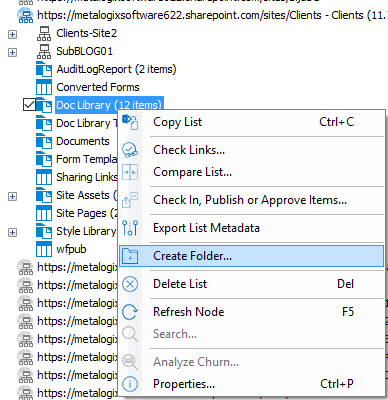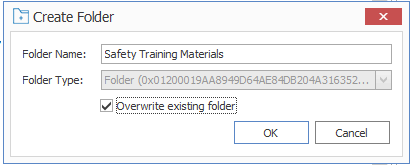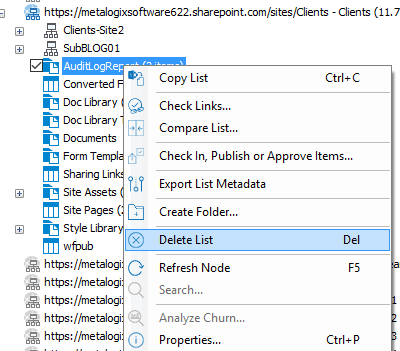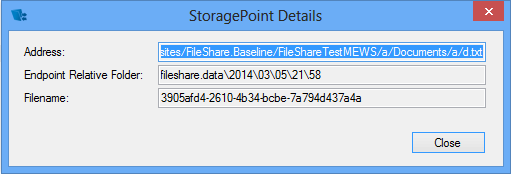Create SharePoint Folder
You can create a new SharePoint list via Content Matrix under an existing list or library (or within an existing folder) as long as the connection type is not read-only.. If folder creation is not valid for the connection type, the option will be disabled.
To create a new SharePoint folder:
1.Navigate to the SharePoint Document Library, List, or Document Folder under which the new folder should be created.
2.Right-click and choose Create Folder.
3.Complete the Create Folder dialog.
Note that the Folder Type drop down allows you to select the content type with which to create the folder. if only one content type exists on that list/library/folder, the option will be grayed out. There is also a check-box option to overwrite any existing folder that uses the same folder name at the level the folder is being added.
4.After completing the dialog, click [OK].
The new folder now displays in Explorer View.
Deleting a SharePoint Object
You can delete one or more SharePoint objects via Content Matrix as long as the connection type is not read-only. SharePoint objects that can be deleted via Content Matrix are:
·SharePoint Sites
·SharePoint Lists
·SharePoint Document Folders
·SharePoint Documents
·SharePoint List Items
If the action is not valid for the connection type, it will be disabled.
NOTE: Document versions and list item versions cannot be deleted via Content Matrix.
To delete one or more SharePoint Objects:
WARNING: When this action is used at the site level or below, the object will be deleted permanently (i.e., it will not be sent to the Recycle Bin). However, a pop-up dialog will display that allows you to cancel the action.
1.Select the SharePoint object(s) to be deleted.
NOTE: Depending on the type of object, this may be in the Explorer View or in the Items View.
2.Either:
§Press the Delete key on the keyboard.
§Right-click on the object and choose Delete [Object].
You will be prompted to confirm the action before continuing.
Viewing StoragePoint Details
Content Matrix can display the Quest® StoragePoint details for any document items that have been offloaded to StoragePoint.
To view StoragePoint details:
1.In Explorer View, navigate to a SharePoint Document Library that contains items that have been offloaded to StoragePoint.
2.Switch to the Items View tab.
3.Select an item, right-click and choose StoragePoint Details.
NOTE: The StoragePoint Details option will only be available in the menu if the selected items have been offloaded into StoragePoint. If the selected item has not been offloaded to StoragePoint the StoragePoint Details options will not be available. Only one item can be selected at a time.
The Storage Point Details dialog provides the below information:
§Address - The web address for the specified item within SharePoint.
§Endpoint Relative Folder - The folder that has been configured as endpoint for the offloaded item (i.e. the location of the item in the offloaded storage space).
§Filename - The StoragePoint file name reference that is left behind in SharePoint after the item has been offloaded.
4.When finished, click [Close].
Initiating a Migration
From the Content Matrix Explorer View, you can "copy" an object from the source connection then "paste" it to the appropriate location on the target connection. You will then be prompted to configure Copy Options.
You can:
·Migrate a File Share Folder as a SharePoint site
·Migrate a File Share Folder as a document library




